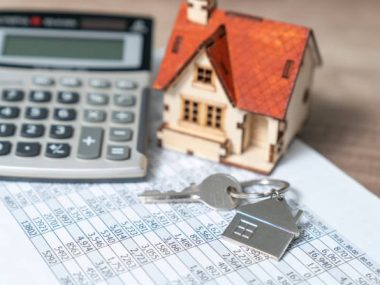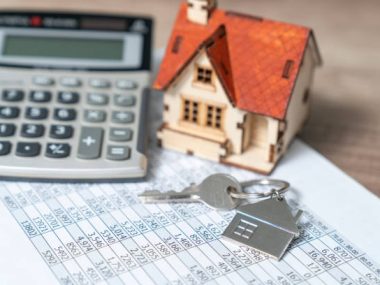If you are searching for how to calculate adjustable rate mortgage, you are in the right place!
In the dynamic landscape of real estate financing, the Adjustable Rate Mortgage (ARM) stands as a versatile and intriguing option for homebuyers seeking flexibility in their loan terms.
Unlike its steadfast counterpart, the Fixed Rate Mortgage, an ARM offers borrowers the potential for varying interest rates over the life of the loan.
This financial tool presents a unique blend of opportunity and uncertainty, making it essential for prospective homeowners to grasp the mechanics of how to calculate an Adjustable Rate Mortgage accurately.
An Adjustable Rate Mortgage embodies the notion that change is the only constant.
As the broader economic landscape evolves, so do the interest rates tied to ARMs.
This can lead to adjustments in monthly payments, creating a financial trajectory that rises, falls, or remains steady, contingent upon the intricacies of the market.
Navigating this complex journey requires a solid understanding of the components that make up an ARM, the factors that influence its adjustments, and the techniques to estimate potential payment fluctuations.
In this article, we will delve into the realm of Adjustable Rate Mortgages, unraveling the intricacies that define them and equipping you with the knowledge needed to calculate and project your payments accurately.
Whether you’re a first-time buyer intrigued by the appeal of an ARM or a homeowner contemplating a switch from a Fixed Rate Mortgage, the insights you gain here will serve as a guiding light through the often intricate path of mortgage calculations.
So, let’s embark on this journey to uncover how to calculate Adjustable Rate Mortgages and navigate the waves of financial change with confidence.
Also Read:
How Long to Keep Mortgage Statements?
Is a Mortgage Considered Debt? (Find Out Now)
How to Calculate Adjustable Rate Mortgage
Calculating an Adjustable Rate Mortgage (ARM) involves understanding the various components that contribute to the monthly payment and being prepared to project potential payment adjustments as interest rates change.
Here are the steps to calculate an ARM:
1. Initial Interest Rate Calculation
The first step in calculating an ARM is determining the initial interest rate.
This rate is usually lower than prevailing market rates and is fixed for a certain period, known as the initial rate period.
The formula for calculating the initial interest rate is as follows:
Initial Interest Rate = Index Rate + Margin
- Index Rate: This is a benchmark interest rate, such as the London Interbank Offered Rate (LIBOR) or the Constant Maturity Treasury (CMT) rate. The lender adds a margin to the index rate to determine your initial interest rate.
- Margin: The lender’s profit margin is added to the index rate. It remains constant throughout the life of the loan.
2. Determining the Monthly Payment
The monthly payment of an ARM comprises both the principal repayment and the interest payment.
To calculate the initial monthly payment, you can use the formula for the loan payment amount, which is based on the loan amount, initial interest rate, and loan term:
Initial Monthly Payment = Loan Amount * (Initial Interest Rate / 12) / (1 – (1 + Initial Interest Rate / 12)^(-Number of Months))
3. Estimating Future Payment Adjustments
ARMs have adjustment periods during which the interest rate can change.
It’s essential to understand how rate adjustments can impact your payments. Here’s how to estimate future payment adjustments:
- Determine the New Interest Rate: At the end of each adjustment period, the interest rate may change based on the index value. Calculate the new interest rate using the formula:
New Interest Rate = Index Rate + Margin
- Calculate the New Monthly Payment: With the new interest rate, use the loan payment formula to calculate the adjusted monthly payment.
4. Scenario Analysis: Predicting Payment Changes
To grasp the potential payment fluctuations, consider various scenarios:
- Best-Case Scenario: Assuming the index rate remains low, calculate the lowest possible monthly payment.
- Worst-Case Scenario: Assuming the index rate rises significantly, calculate the highest possible payment.
- Moderate-Case Scenario: Calculate a payment based on a moderate increase in the index rate.
5. Monitoring and Management
As your ARM progresses, monitor the index rates regularly to anticipate changes.
If rates are projected to rise significantly, it might be worth considering options like refinancing to a fixed-rate mortgage or exploring the possibility of rate caps to limit payment increases.
6. Using ARM Calculators and Tools
Online ARM calculators are valuable tools for estimating future payments based on various index rate scenarios.
These calculators allow you to input different index rates, margins, and adjustment periods to see how payments might change over time.
7. Seeking Professional Advice
Given the complexities of ARMs, it’s advisable to consult with financial advisors or mortgage professionals.
They can help you understand the nuances of your specific ARM terms and guide you through potential payment adjustments.
Also Read:
Is House Insurance Cheaper without a Mortgage?
How Does a Reverse Mortgage Work in Florida?
Conclusion
Calculating an Adjustable Rate Mortgage involves understanding the initial interest rate, using formulas to determine the initial and subsequent monthly payments, estimating future payment adjustments, and analyzing different scenarios.
By grasping these aspects, you can make informed decisions and navigate the ever-changing landscape of mortgage payments with confidence.






